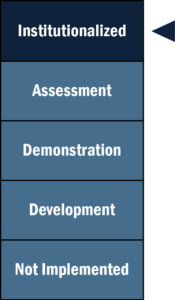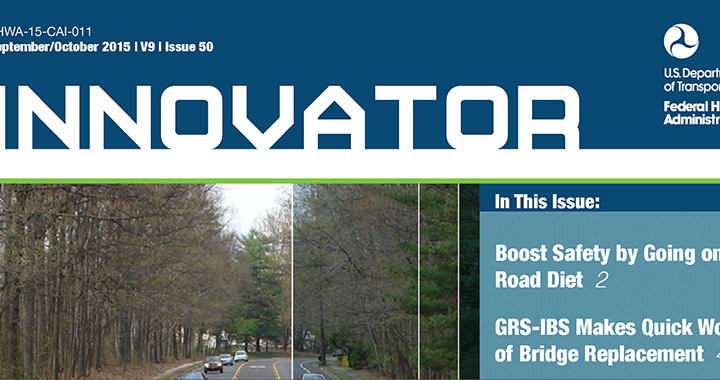What is a Geosynthetic Reinforced Soil-Integrated Bridge System?
Geosynthetic reinforced soil-integrated bridge system (GRS-IBS) technology can help meet the country’s demand for small, single-span bridges by delivering low-cost, durable structures that can be built with readily available equipment and materials. A GRS-IBS project can be built in weeks instead of months, saving time and cutting work zone congestion.

The technology consists of three main components: the reinforced soil foundation, the abutment, and the integrated approach. Alternating layers of compacted granular fill and geosynthetic reinforcement provide support for the bridge. The closely spaced reinforcement and granular soil create an efficient composite material that is internally stable and capable of carrying bridge loads significantly higher than designed with predictable and reliable performance.
Since GRS-IBS construction involves basic earthwork methods and practice, without requiring highly skilled labor, and employs commonly available equipment and materials, projects can be completed faster and at lower cost. Constructing a GRS-IBS bridge can cost 25-60% less than one built with conventional methods, depending on the standard of construction and the method of contracting.
Learn more about this EDC-3 Innovation.
NJ'S Use of GRS-IBS
 Stage of Innovation:
Stage of Innovation:
Institutionalized
During EDC-3, county officials piloted GRS-IBS for a bridge replacement:
Gloucester County Officials Spearheaded GRS-IBS in New Jersey. When the Jessup Mill Road Bridge closed due to flooding, GRS-IBS was chosen to replace to the bridge to minimize the cost and duration of the project.
GEOSYNTHETIC REINFORCED SOIL INTEGRATED BRIDGE SYSTEMS: NEW & NOTEWORTHY

